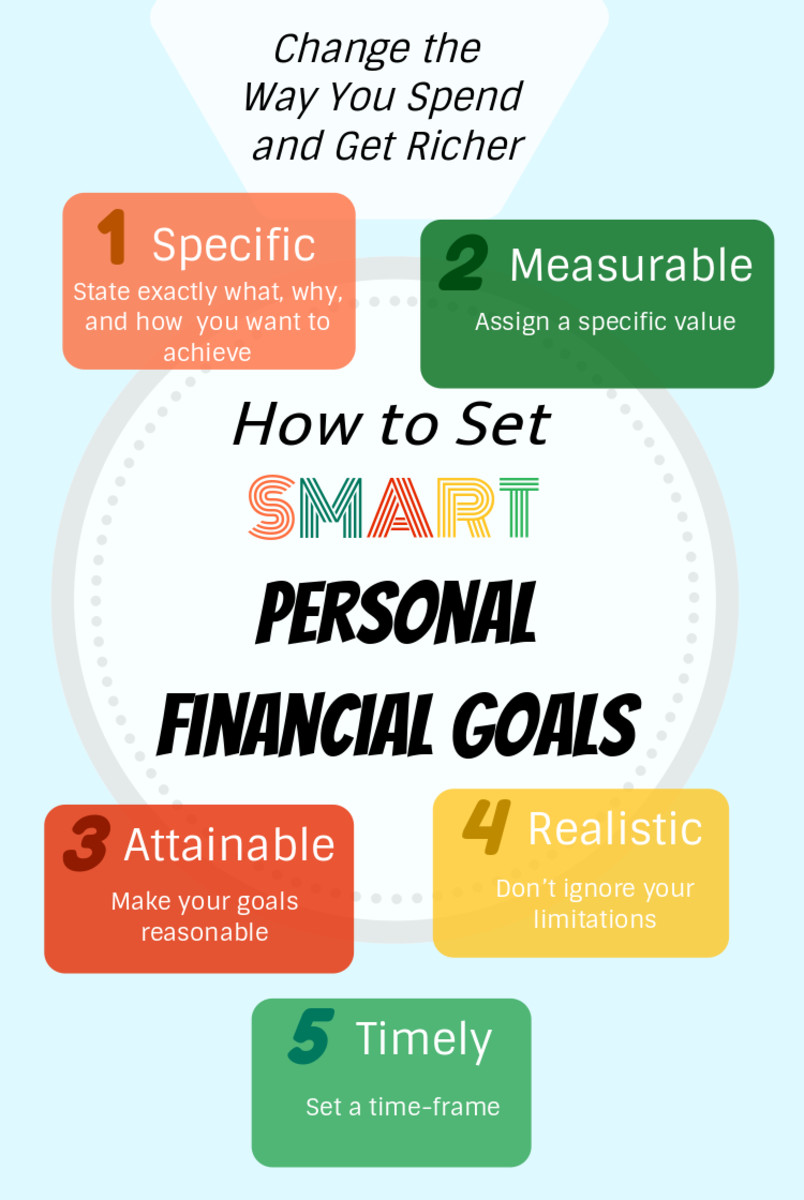Personal Finance Management - Basic Terms and Concepts
What are the main components of a personal balance sheet and a cash flow statement? What is the main purpose of each of these personal financial statements?
There are 3 main components of a personal balance sheet (net worth statement) including your assets (real estate, personal objects, liquid assets) next is your liabilities or what you owe to various banks and financial institutions and finally your net worth which is your total assets minus your liabilities. The purpose of a personal balance sheet is to see where you stand financially, this sheet shows how you are in debt and also shows where you are lacking financially. A cash flow statement shows the inflow and outflow of money in your possession for a given amount of time. A cash flow statement also known as a personal income and expenditure statement can show you where you spend the most money, where you can cut back and can help you manage your money better. The main components of this sheet is the total money received during the time period typically a month minus the total money spent which will show you if you have extra cash or if your spending more than you have coming in. Using both statements will allow you to see your current financial situation, measure your progress toward your financials goals, track your spending and savings and have the proper information for taxes or applying for credit.
Why opportunity cost is an important concept in money management?
Opportunity cost is a crucial concept to understand when learning about money management and can help you achieve your financial goals. Opportunity cost is the idea that money used for one thing is lost money to use toward another object or to put away in savings. Opportunity cost is decision making process in which you compare potential uses for your money and which use would be most beneficial to your end goals. In most situations people tend to only think about the purchase they are making at that time and not the long term effects. An example would be if you spent $150 on a new pair of shoes, not only did you spend $150 on the shoes but it is also a lost opportunity to save that money or to use that money to invest. Understanding that spending that money is more than just spending the money and that you are hindering yourself in the future. Understanding the idea of opportunity cost will greatly help with your money management and will help you reach your financial goals.
What is life insurance? What is its purpose and principle?
In its crudest definition Life Insurance is when a person makes regular payments to the company in exchange for a lump sum payment to the beneficiaries when the insured person passes away or sometimes when they’re still alive. Life Insurance can be used in many different ways including paying for funeral costs and healthcare bills, paying off a mortgage, leave as a part of your estate or even as a retirement fund or education fund for children.
There are many types of life insurance but the most common ones are Term life insurance, Universal Life Insurance and Whole Life Insurance. Term Life Insurance is one of the most popular life insurance and can be less expensive than permanent life insurance. Term life insurance was created to provide financial support for a set period of time after the claim is submitted like 10 to 20 years but is still paid in a lump sum form not regular paychecks. Universal life insurance is a permanent life insurance that is meant to provide coverage for a lifetime. Policies are typically more flexible allowing you to change premiums and coverage throughout your lifetime. Whole life insurance is another type of permanent life insurance that covers for a lifetime like Universal insurance but premiums are usually higher and are fixed.
What are some things that you can do to reduce your personal health care costs?
Health care can be very expensive especially if you’re constantly using your insurance on a regular basis. The easiest way to save money on your healthcare cost is monitoring your health; regular doctor visits and screenings can help alert you of major issues down the road early on. Knowing you have increasing cholesterol and blood pressure can alert you to change your life style and food intake before it turns into something more serious like a heart attack or heart surgery which is extremely expensive. Another point is just staying healthy in general exercising and eating healthy goes a long way.
A big mistake a lot of people make is going to the emergency room too often for minor issues like strep throat, ear infections (especially with children), and other non-life threatening issues. Trips to the ER are very expensive when you could easily be remedied by making an appointment with your Dr. or urgent care when your office isn’t open. Doing all these things will help keep you healthy which means less visits to the Dr. so potentially a High Deductible Insurance plan would be better and save you money in the long run. The out of pocket costs will be more expensive but if you are healthy and making less trips to the ER or Dr. ultimately you can save.
What is meant by the term "Time Value of Money?"
Time value money is a concept that money you currently have in your possession is worth more than that same amount in the future whether it’s a guaranteed amount from an agreement or future paycheck. The idea behind this is that the money you own now can be used to invest and earn a return in the interest making the original dollar worth more. It supports the idea of interest and can be used to compare investments.
What are the four main categories of the financial planning pyramid?
The bottom part of the pyramid is Vision this section of the pyramid is mostly your goals and missions. This is where you sort out priorities and end goals of planning your finances. The next section is Protection; this section has you begin to put your money into different locations. This includes your E.F. or emergency fund which should be 3 months of income or 6 months of your average spending. Also in this section is Defense which is your insurances (life, health, umbrella, LTC). Lastly included is your safe money or low risk investments like bonds. The next part of the Pyramid is the accumulation section; this is where you begin to invest money for long term gain. This could include a 401K, 403B, Roth IRA, a business or even your career. Lastly is the distribution section which could be your estate planning like your will or retirement distribution.








